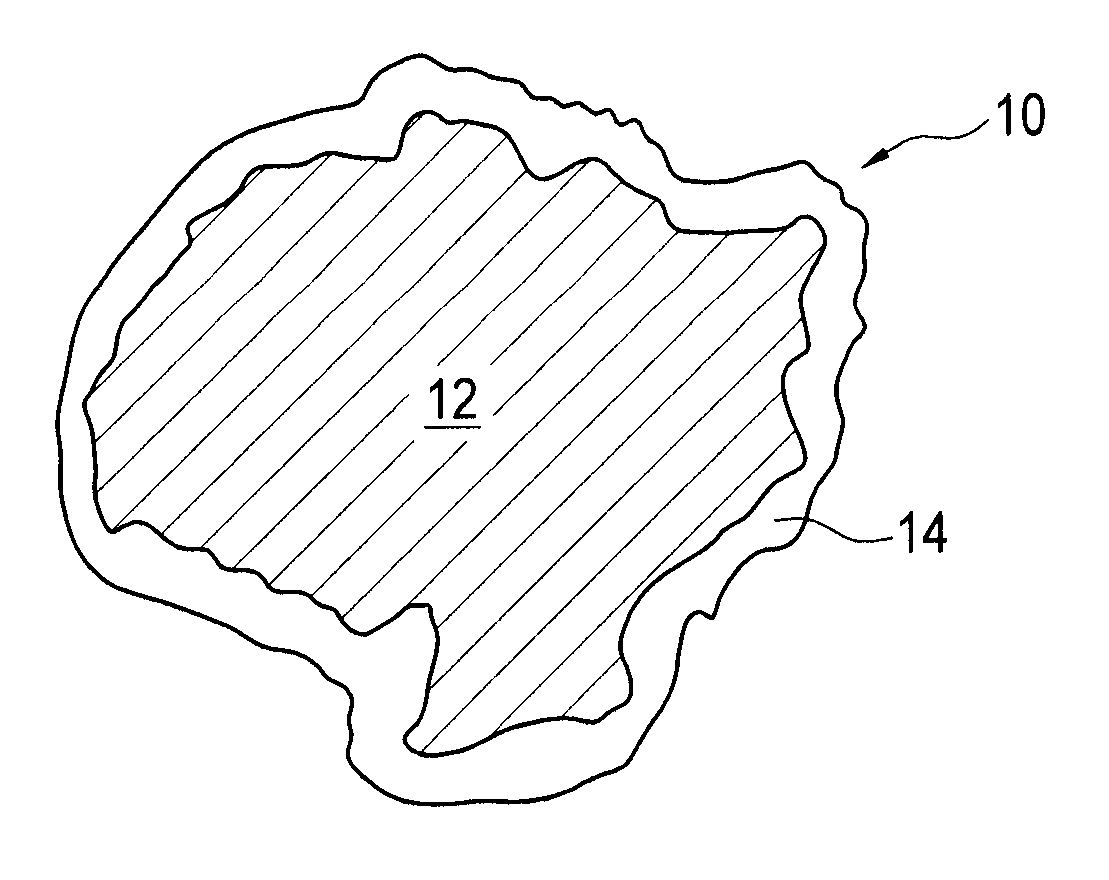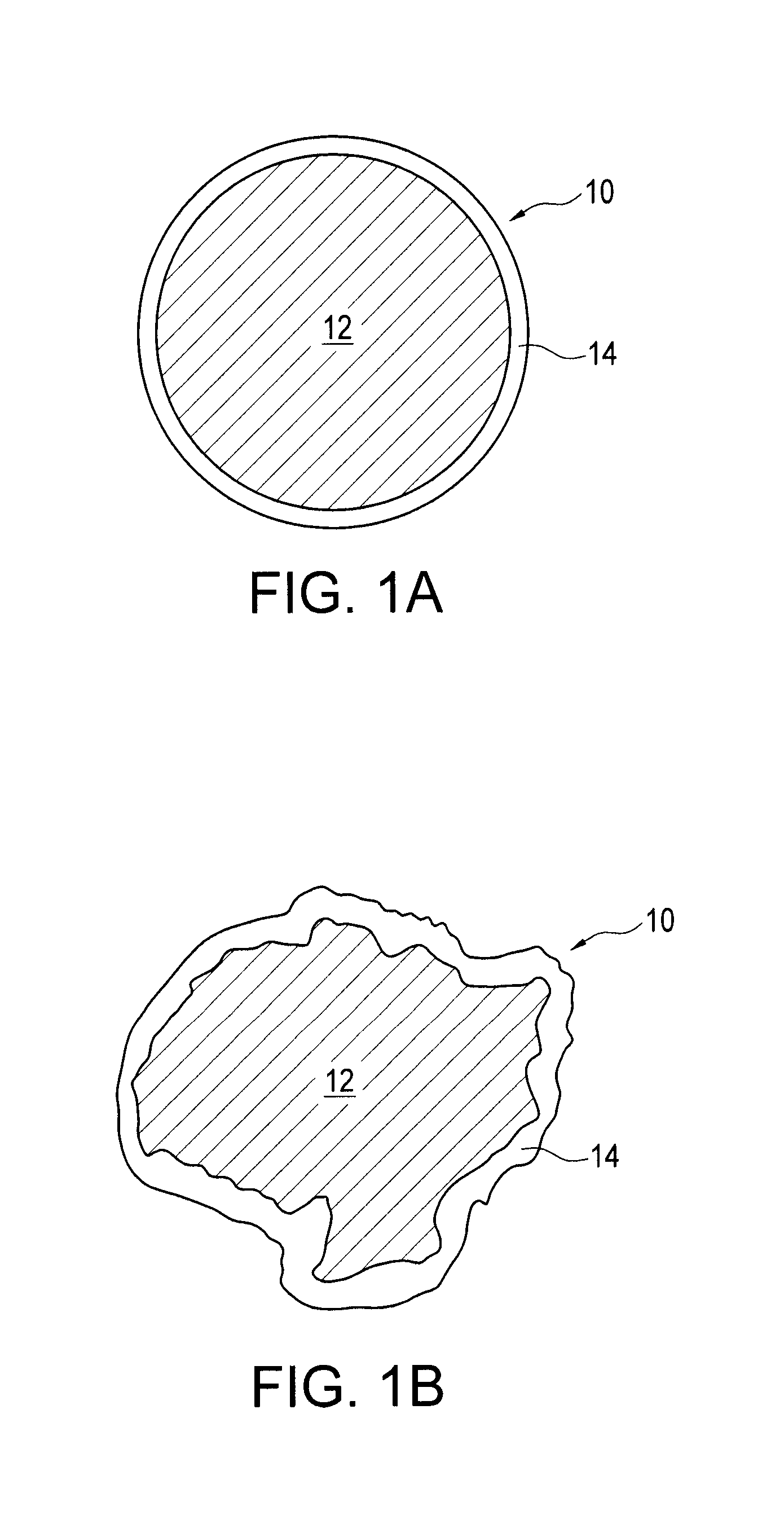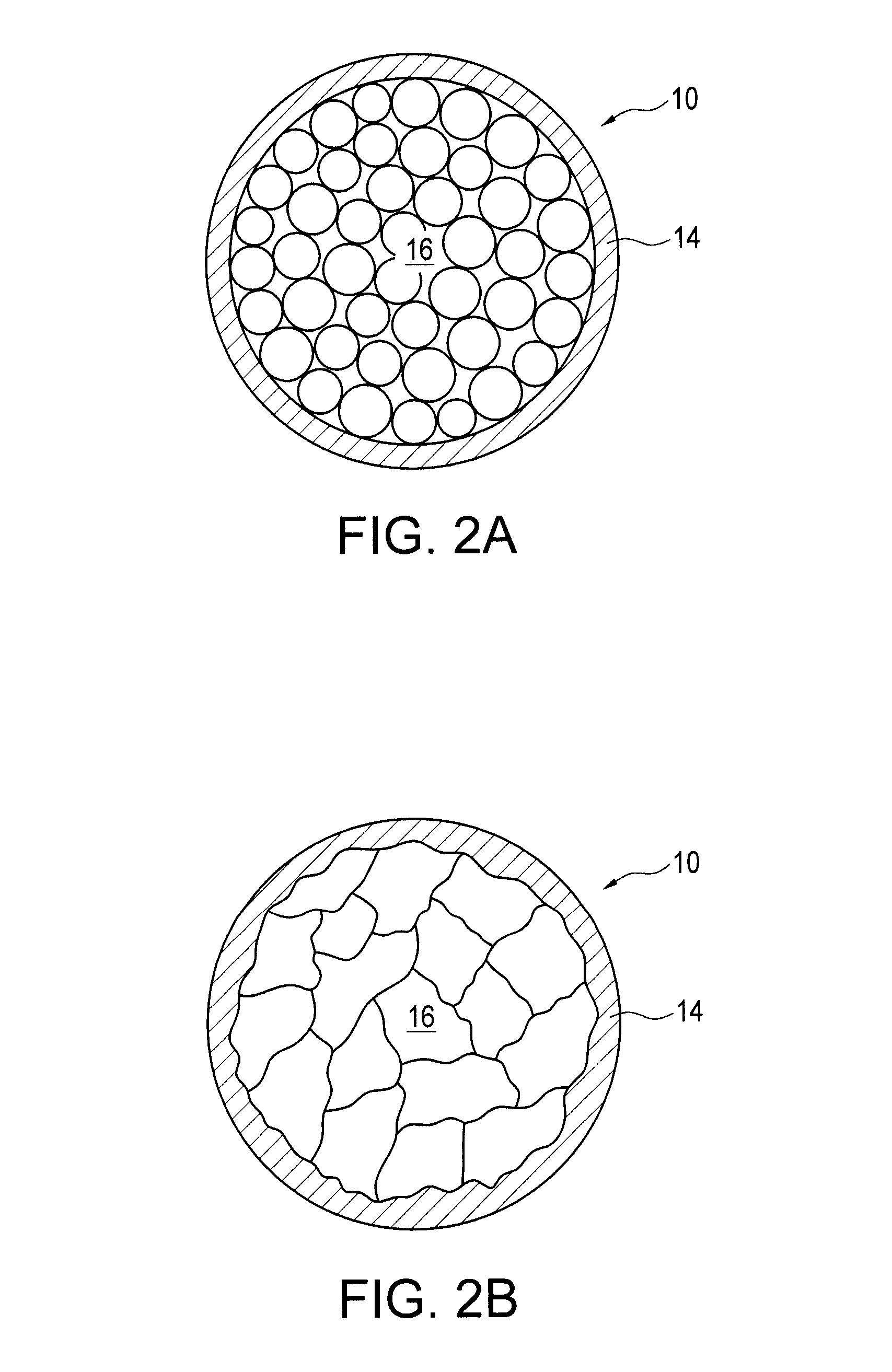Additives for controlling lost circulation and methods of making and using same
- Summary
- Abstract
- Description
- Claims
- Application Information
AI Technical Summary
Benefits of technology
Problems solved by technology
Method used
Image
Examples
example 1
[0077]The ability of the additive of the present invention to control or reduce lost circulation to a highly permeable or porous rock formation was tested using a test cell which simulated a closed loop circulation system of a drilling fluid through a porous rock structure. The test cell allowed the process to be visualized through a clear flow chamber, and the application of fluid pressure up to 50 psi upon the cell itself and any formed seal of the porosity inside the flow chamber after the application of the test samples which were polystyrene alone; polystyrene with cellulose; and polystyrene and polyurethane foam.
[0078]The test cell was constructed from 3 inch acrylic plastic and 3 inch PVC pipe components bonded and threaded together, and included fittings to allow the circulation of fluids through the test cell in a continuous loop. The test cell was provided with a threaded opening at one end of the test cell to allow the insertion and sealing of the porous rocks within the ...
example 2
[0085]Potential use of the additive of the present invention (1 mm expanded polystyrene beads (EPS)) in an oil based drilling fluid was determined by testing the additive over a range of temperatures (65° C., 100° C.) and through various filtration media. A basic invert emulsion drilling fluid formulation was used as the medium for testing the additive against a commercial additive known as Gilsonite™ (uintaite or uintahite) which is a form of natural asphalt found only in the Uintah Basin of Utah. The test samples (350 mL) were prepared by first combining the components in the order set out in Table 1 in a 500 mL hot rolling cell and mixing at very high shear for 5 minutes using a homogenizer type mixer.
TABLE 1ComponentConcentrationBase fluid (Cutter D)90:10 oil:water ratio (“OWR”)Lime7.5kg / m3Organophilic Clay15.0kg / m3Primary Emulsifier8.0L / m3
An amount of 30% CaCl2 brine was then added as required for a 90:10 OWR. Each of the test additives (additive comprising 1 mm EPS beads; Gils...
example 3
[0094]Expanded polystyrene beads (Elemix™, 0.5-1.0 mm beads, SYNTHEON Inc., Leetsdale, Pa.) were suspended in a viscosified fluid (water, polyanionic cellulose polymers, partially-hydrolyzed polyacrylamide / polyacrylate polymers, xanthan gum polymers, guar polymers, and bentonite clays) to yield a low density drilling fluid (densities ranging from about 350 kg / m3 to 995 kg / m3). Due to buoyancy conferred by the expanded polystyrene beads, the suspension floated above a screen filter (¼″) representing a loss zone.
PUM
 Login to View More
Login to View More Abstract
Description
Claims
Application Information
 Login to View More
Login to View More - R&D
- Intellectual Property
- Life Sciences
- Materials
- Tech Scout
- Unparalleled Data Quality
- Higher Quality Content
- 60% Fewer Hallucinations
Browse by: Latest US Patents, China's latest patents, Technical Efficacy Thesaurus, Application Domain, Technology Topic, Popular Technical Reports.
© 2025 PatSnap. All rights reserved.Legal|Privacy policy|Modern Slavery Act Transparency Statement|Sitemap|About US| Contact US: help@patsnap.com



